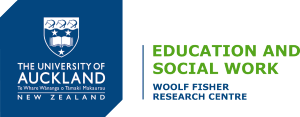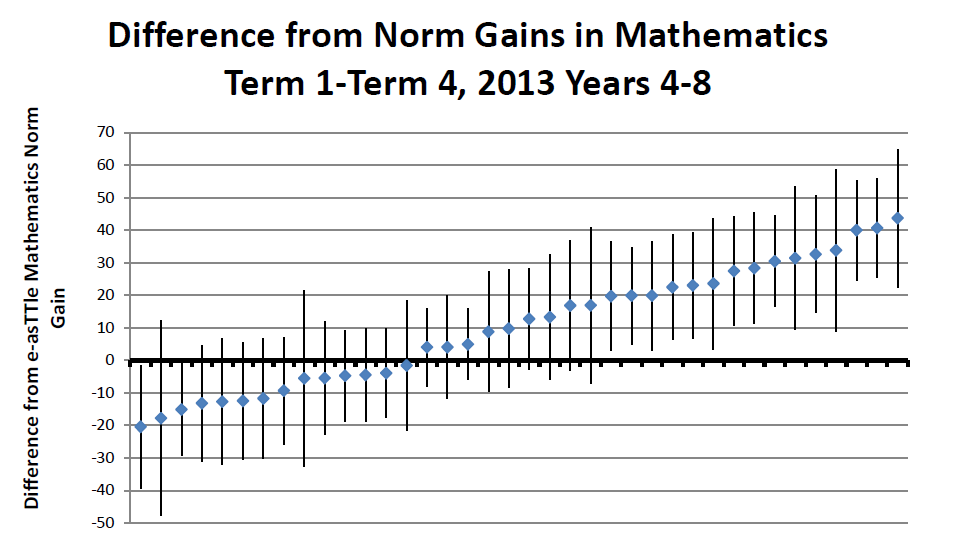As outlined previously, bridging the digital divide requires at least two levels of mediation. We have identified that overcoming the barrier of access to the internet and digital technologies is an initial divide to cross followed by another; the need for effective application and social integration of digital technologies if achieving access is to be of any effect, (Dowding, 2004). Initiatives in New Zealand are working to decrease the digital divide with ongoing research evaluating some of these programs. On the front-line helping to overcoming the first barrier of access New Zealand Public Libraries offer free Wi-Fi and internet access for the public on their library computers or offer internet access at a very low cost. Other community groups such as Manaiakalani backed by corporate sponsors ‘The Spark Foundation’ in conjunction with ‘The University of Auckland,’ are seeking to address both levels of digital access and research driven application within clusters of low socioeconomic schools in Auckland.
The Manaiakalani Education Trust Initiative
 |
| Manaiakalani: 'The hook from heaven' |
The Manaiakalani initiative was first birthed in 2007 as a four year curriculum development project aimed at raising student achievement by developing pedagogical and educational practices in keeping with the National E-learning Action Plan. By 2008 their aim was to:
- Develop a model for 21st C Teaching and learning
- Motivate Students to engage in learning activity
- Lift Student achievement
- Empower Students to contribute personal voice
- Create and discover authentic audiences for students’ work. (Annan, 2012)
In 2011, the Manaiakalani Education Trust was established to support schools (below) in their journey towards digital literacy.
It was found that the schools in the Manaiakalani cluster needed an entity with the ability to:
It was found that the schools in the Manaiakalani cluster needed an entity with the ability to:
 |
| The Manaiakalani Cluster |
- create a community wide wireless learning network
- hold the liability for student netbook leases
- supply back-end financial systems
- supply end to end technical support
- supply whanau / family / community training and capacity building
- provide professional development and research above that being paid for by vote education, (Manaiakalani, n.d.)
Wesley Intermediate is an example of a recent addition to the Manaiakalani program. In an interview with the principal we discussed his school's digital journey and experience with Manaiakalani in the creation of their newly refurbished digital learning environments.
A full video of the interview can be seen here.
An informative article based on our interview continues here.
An informative article based on our interview continues here.
Assessment and Evaluation of the Manaiakalani Project
 Manaiakalani's relationship with the University of Auckland Woolf Fisher Research Centre is another way in which an evaluation of its program can be presented. Woolf Fisher is conducting ongoing research and formative evaluation of the Manaiakalani Program as demonstrated by the performance of schools in its cluster and additionally connected schools also running the Manaiakalani program. A ‘Milestone Evaluation’ report is written at the beginning and end of each year to effectively measure and evaluate the success of the program in improving student academic performance in Maths, Reading and Writing. Students results from each school is compared with the national average to establish trends of learning over the academic year, teaching observations are made, survey's / interviews are conducted and recommendations based on these results are presented in the reports complied.
Manaiakalani's relationship with the University of Auckland Woolf Fisher Research Centre is another way in which an evaluation of its program can be presented. Woolf Fisher is conducting ongoing research and formative evaluation of the Manaiakalani Program as demonstrated by the performance of schools in its cluster and additionally connected schools also running the Manaiakalani program. A ‘Milestone Evaluation’ report is written at the beginning and end of each year to effectively measure and evaluate the success of the program in improving student academic performance in Maths, Reading and Writing. Students results from each school is compared with the national average to establish trends of learning over the academic year, teaching observations are made, survey's / interviews are conducted and recommendations based on these results are presented in the reports complied. |
| Figure 1: Difference from expected (norm) gains across 2013 in e-asTTle reading by classroom for Year 4-8 students. |
 |
| Figure 2: Difference from expected (norm) gains across 2013
in e-asTTle mathematics by classroom for Years 4-8
|
Overall, it has been reported that Manaiakalani students are learning up to 1.5 times the national average, which means that many students are making gains in closing the gap between their achievement levels and national norms. Some students are making accelerated progress in their studies also.
Woolf Fisher Research Centre in their 2014 Manaiakalani Milestone Evaluation report assessed student performance over the 2013 academic year illustrating achievement patterns in reading and maths within year groups as compared with norms with results such as this year 4-8 example.
These results demonstrate what is referred to in the report as ‘pockets of promise’ groups of students making steady and accelerated progress throughout the year.
 |
| Figure 3: Difference from national pass rates across 2008 to 2013
in NCEA Level 2 Certificate
|
Maori and Pasifika students’ performance also rose in NCEA level 1, 2 and 3 with the most significant rise in level 2 students, further closing the gap between achievement levels and national norms.
In the July 2014 Milestone Three report, based on qualitative researching involving six leaders in the Manaiakalani cluster, a number of issues were identified as barriers to the successful implementation of the program. The most significant of these included slow parental ‘buy-in’ to the program in some areas, the time commitment required of the school to implement the new program and instances of hardware or network failure.
Table 1:
Summary
of Leader Identified Barriers to Manaiakalani
|
Leaders
| |||||||
Theme
|
Example
|
A
|
B
|
C
|
D
|
E
|
F
|
|
Whānau
engagement / buy-in
|
'Parents...
[who] still do not fully understand and value the full implications of what
Manaiakalani is achieving’
|
|||||||
Time
|
'The
speed and time commitment of the changes and impact on the staff and school'
|
|||||||
Hardware
&network failure
|
'The
number of breakdowns of devices, especially the Chromebooks'
|
|||||||
Payment
administration
|
'Chasing
up families who get behind in their payments'
|
|||||||
Teacher
expertise
|
'The
time it takes some teachers to upskill'
|
|||||||
Staff
turnover
|
‘Staff
turnover'
|
|||||||
Security
costs
|
'The
amount of money it has taken to ensure security fora large number of
netbooks'
|
|||||||
Student
attendance & transience
|
‘Transience
/ poor health of many students / poor attendance of some.'
|
|||||||
In identifying enablers to the program, the same leaders indicated that high levels of teacher ‘buy-in’ and support from the Manaiakalani Education Trust were the most significant followed equally by the initiatives’ strategic and self-less leadership, community support and levels of collaboration within school clusters.
Table 2:
Summary
of Leader Identified Enablers to Manaiakalani Implementation
|
Leaders
|
|||||||
Theme
|
Example
|
A
|
B
|
C
|
D
|
E
|
F
|
|
Teacher
'buy-in'
|
‘Staff
knowledge, buy in, ability to learn and apply new knowledge'
|
|||||||
Manaiakalani
Education Trust Support
|
‘The
huge amount of support from the facilitators, and other staff of the
Manaiakalani Education Trust’
|
|||||||
Strategic
leadership
|
'The
selfless leading of the initiative...their willingness to ensure we have
confidence to progress our own schools' strategic directions'
|
|||||||
Cluster
collaboration
|
‘Collaboration!!!!
Collaboration among teachers using netbooks within schools and across the
cluster; among Principals and BOT's’
|
|||||||
Community
support
|
'Support
from the BOT and community'
|
|||||||
Robust
network
|
‘At
last a robust (fibre) connection’
|
|||||||
Leaders also shared their measurements in evaluating the success of the Manaiakalani program with high levels of student engagement and motivation being the most significant factor identified as follows:
Table 3:
Summary
of Leaders’ Stated Measures of Evaluating Manaiakalani Success
|
Leaders
|
|||||||
Theme
|
Example
|
A
|
B
|
C
|
D
|
E
|
F
|
|
Student
engagement &motivation
|
‘Student
engagement is high and constant-we know this is a factor due to the minimal
number of behaviour management incidences'
|
|||||||
Teacher
satisfaction
|
'Staff
enthusiasm and growing skills'
|
|||||||
Student
achievement
|
'Ongoing
increase in student achievement data'
|
|||||||
Student
output(reflection & sharing)
|
'Quality
of learning that is created and shared'
|
|||||||
Integrated
netbook usage
|
'Regular
application of the device as an integral part of teaching and learning'
|
|||||||
Classroom
observations
|
'Ongoing
and constant observations'
|
|||||||
Independent
evaluations
|
'The
way visitors and outside agencies judge us'
|
|||||||
It was evaluated that a strong commitment to Manaiakalani's vision continues to exist and recommendations were made to support teachers with the ongoing development of strong teaching pedagogy in their digital learning environments. Among Woolf Fishers recommendations, summer maintenance programs, promotion of critical thinking through discussions and related activities particularly in the evaluation of multiple texts were points emphasized in this years 2014 assessment.
Summary
Overall, clusters of low decile schools across Auckland are experiencing success with the implementation of modern digital learning environments. Inspired and led by the Manaiakalani Education Trust and associated cluster of schools, other decile one schools are following suit with positive results.
One of the key factors contributing to the success of the program seems to lie in its collaborative nature. This venture begins with clusters of schools (on average 5-6 schools) who form educational trusts under the guidance and direction of Manaiakalani for the community roll out of wireless internet and encouragement of 1:1 device ownership through affordable hire to buy chromebook purchasing options. Teacher training, community education and ongoing technical and pedagogical support for each school is taken into consideration and catered for. As Manaiakalani and Wesley Intermediate principal Nigel Davis indicate (Davis, Interview), this is not something a school can do alone, teamwork and collaboration at a community and inter-school level is necessary. When school clusters and communities catch the same vision and work together, overcoming the digital divide of access and application through collaboration is possible.

No comments:
New comments are not allowed.